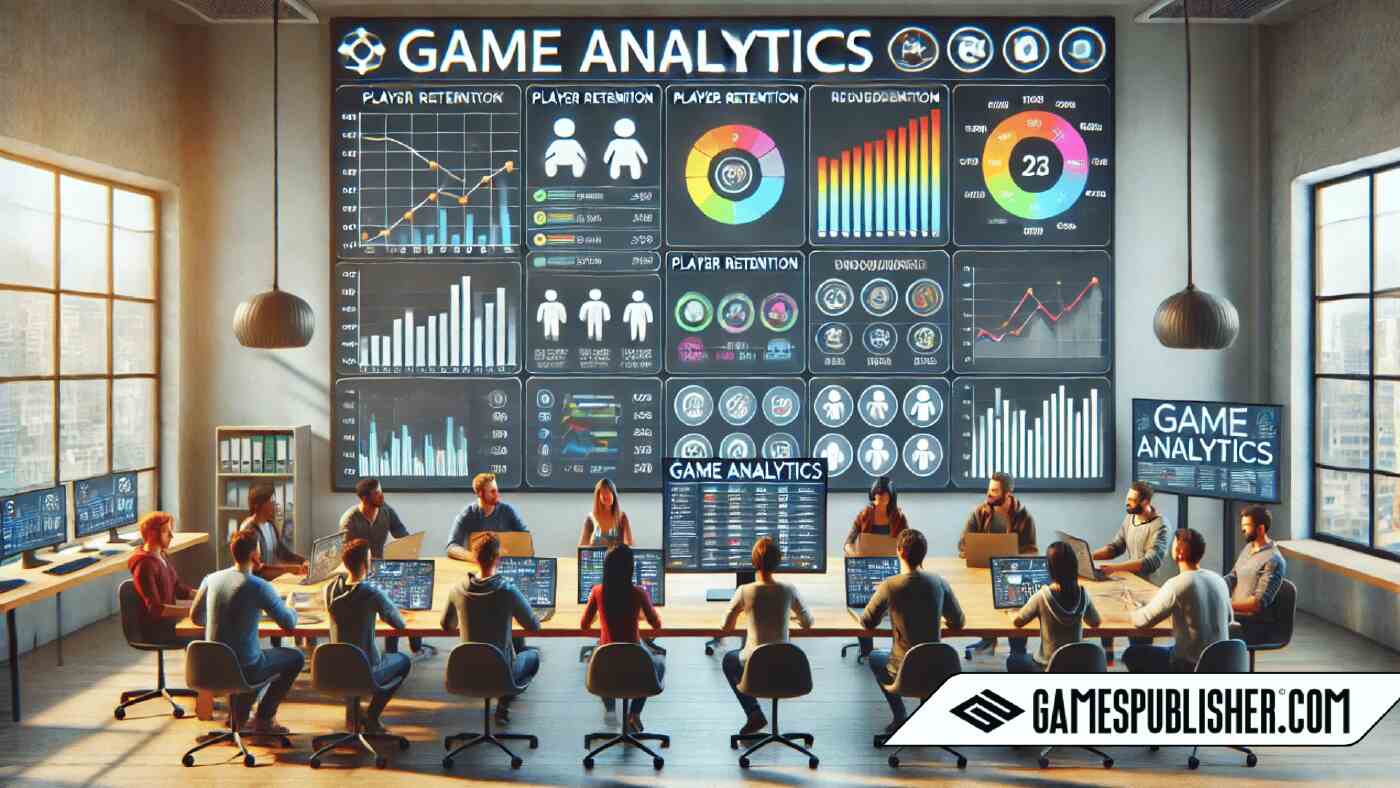In today’s fast-paced gaming world, making a successful game isn’t just about creativity and design. It’s about understanding what players want and how they interact with your game.
This is where game analytics comes into play. Game analytics helps developers and publishers understand player behavior, optimize game design, and boost revenue.
It’s the secret sauce that can turn a good game into a great one. For those who want to dive deeper into the world of game analytics, Gamespublisher.com is a great resource for improving game performance and staying ahead in the industry.
The Importance of Game Analytics
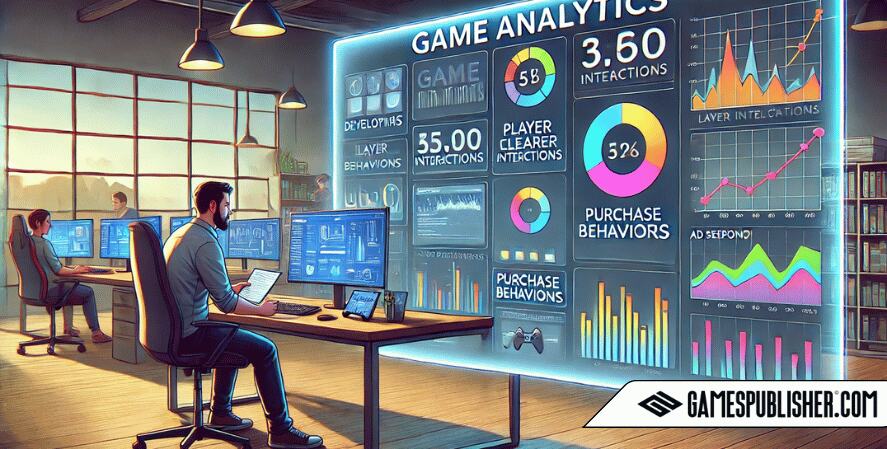
Why Game Analytics Matters
Game analytics is crucial because it allows developers and publishers to make informed decisions. Instead of guessing what works and what doesn’t, you can rely on real data.
This data shows how players are interacting with your game. With this information, you can enhance player experiences, fine-tune game mechanics, and maximize your revenue. Without analytics, you’re flying blind, and your game might not reach its full potential.
Enhancing Player Experience
One of the biggest benefits of game analytics is improving the player experience. By understanding how players move through your game, where they get stuck, or where they lose interest, you can make adjustments. These changes keep players engaged and coming back for more.
Optimizing Game Design
Analytics helps you see which parts of your game work well and which parts need improvement. You can use this information to adjust levels, tweak difficulty, or change how rewards are given. This makes your game more enjoyable and helps keep players playing longer.
Driving Revenue
For publishers, making money is a top priority. Game analytics helps you understand how players spend money in your game. You can see which items sell the best, how players respond to ads, and what pricing strategies work. This helps you optimize your monetization strategies, leading to higher revenue.
What is Game Analytics?

Definition and Overview
Game analytics is the process of collecting, analyzing, and using data from your game. This data shows how players interact with your game.
It includes everything from how often they play, to where they quit, to how much they spend. By studying this data, developers and publishers can make better decisions that improve the game and increase profits.
Types of Game Analytics
There are different types of game analytics that focus on various aspects of your game. Understanding these types can help you get the most out of your data.
- Player Behavior Analytics: This type looks at how players move through your game. It includes data like player progression, level completion rates, and in-game actions.
- Monetization Analytics: This type focuses on how your game makes money. It tracks in-game purchases, ad revenue, and other ways your game generates income.
- Performance Analytics: This type measures how well your game runs. It includes data on loading times, crashes, and other technical issues that might affect player experience.
Key Metrics in Game Analytics
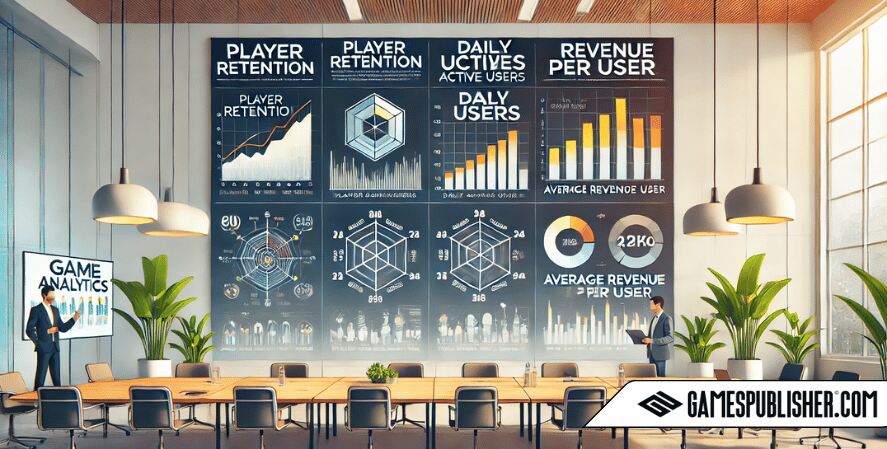
Player Retention
Player retention is one of the most important metrics in game analytics. It shows how many players keep coming back to your game after their first play.
High retention means your game is engaging and fun, while low retention might mean players are losing interest quickly. Improving retention is key to the long-term success of your game.
Engagement Metrics
Engagement metrics show how much time players spend in your game and how often they play. Some important engagement metrics include:
- Daily Active Users (DAU): The number of unique players who play your game each day.
- Session Length: How long a player stays in the game during each session.
- Session Frequency: How often a player returns to play the game.
Tracking these metrics helps you understand how engaged your players are and whether your game is keeping their interest.
Monetization Metrics
Monetization metrics focus on how your game makes money. These include:
- Average Revenue Per User (ARPU): The average amount of money each player spends in your game.
- Lifetime Value (LTV): The total revenue you can expect from a player over the time they play your game.
These metrics are crucial for understanding the financial health of your game and optimizing your revenue strategies.
Tools and Platforms for Game Analytics

Popular Analytics Tools
There are several tools available to help you track and analyze game data. Some of the most popular tools include:
- Unity Analytics: A powerful tool that integrates seamlessly with Unity-based games, providing insights into player behavior and game performance.
- GameAnalytics: A user-friendly platform that offers a wide range of analytics features, from player retention to monetization metrics.
- Firebase: A comprehensive platform by Google that includes real-time analytics, crash reporting, and user segmentation.
Integrating Analytics Tools
To get the most out of game analytics, you need to integrate these tools into your game. Here’s a simple step-by-step guide:
- Choose Your Tool: Decide which analytics tool best suits your needs.
- Set Up an Account: Register for an account on the analytics platform.
- Install the SDK: Follow the instructions to install the software development kit (SDK) into your game’s code.
- Configure Events: Define which events you want to track, such as level completions, in-game purchases, or session starts.
- Start Tracking: Once set up, the tool will start collecting data that you can analyze.
For gathering player feedback through surveys, Polling.com offers easy-to-use tools that can be integrated with your game.
How to Use Game Analytics to Improve Game Performance
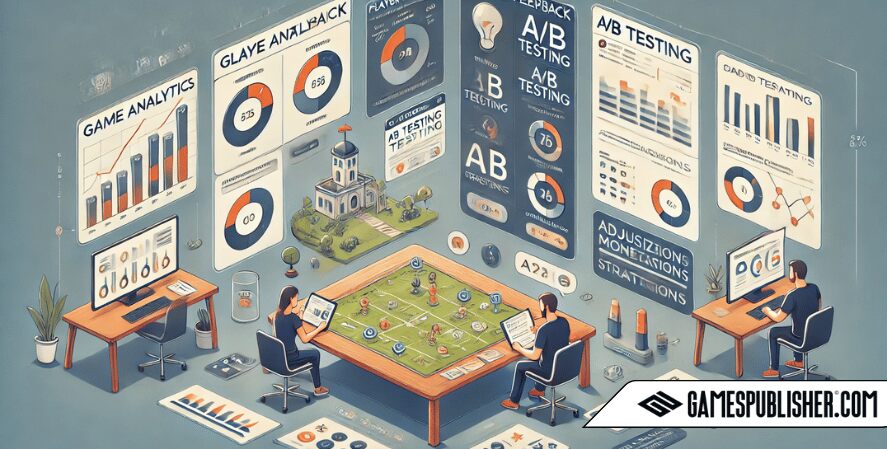
Analyzing Player Feedback
Player feedback is a goldmine of information. By analyzing feedback, you can identify areas where your game might be falling short. Maybe a level is too hard, or a feature is too confusing. Listening to your players and making changes based on their feedback can greatly improve your game.
A/B Testing
A/B testing is a method where you compare two versions of a game feature to see which one performs better. For example, you might test two different menu designs to see which one players find more intuitive. A/B testing helps you make data-driven decisions that improve player experience and increase retention.
Optimizing Monetization Strategies
Using game analytics, you can refine your monetization strategies. For instance, if you notice that players are more likely to make in-app purchases at certain points in the game, you can place special offers or ads at those times. This strategy can increase your revenue without disrupting the player experience.
Case Studies of Successful Game Analytics Implementation

Example 1: Improving Player Retention
A mobile game developer noticed that players were quitting after level three. By using game analytics, they discovered that this level was too difficult. After adjusting the level’s difficulty, player retention increased by 20%. This change also led to higher in-game purchases as players progressed further into the game.
Example 2: Optimizing Game Design
Another game company used analytics to study how players were interacting with their game’s interface. They found that many players were missing key features because they were hidden in submenus. By redesigning the interface to make these features more accessible, the game saw a significant boost in user engagement and player satisfaction.
Challenges and Best Practices in Game Analytics
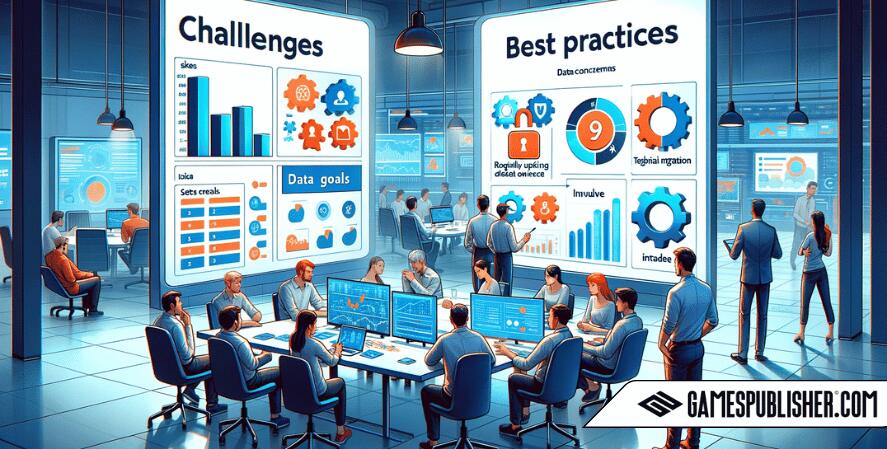
Common Challenges
While game analytics offers many benefits, it also comes with challenges. Some common issues include:
- Data Privacy Concerns: Collecting player data can raise privacy issues. It’s important to ensure that your data collection practices comply with laws like GDPR.
- Data Overload: With so much data available, it can be overwhelming to decide what to focus on. It’s crucial to set clear goals and track only the most relevant metrics.
- Technical Integration Issues: Integrating analytics tools can be technically challenging, especially for smaller developers. Make sure to follow the tool’s documentation closely and seek help if needed.
Best Practices
To get the most out of game analytics, follow these best practices:
- Set Clear Goals: Know what you want to achieve with your analytics. Whether it’s improving player retention or increasing revenue, having clear goals will guide your analysis.
- Regularly Update Data: Keep your data up to date to ensure that your insights are accurate. Regularly check for new trends or issues.
- Involve Your Team: Make sure that everyone on your team understands the importance of analytics. Share insights regularly and encourage team members to suggest improvements based on the data.
Conclusion
Game analytics is a powerful tool for developers and publishers. It helps you understand player behavior, optimize game design, and increase revenue.
By using analytics, you can make data-driven decisions that lead to the success of your game. For those looking to deepen their understanding of game analytics and improve their game’s performance, Gamespublisher.com offers a wealth of resources and insights.
Don’t miss out on the opportunity to take your game to the next level by leveraging the power of analytics.
Loading survey...

